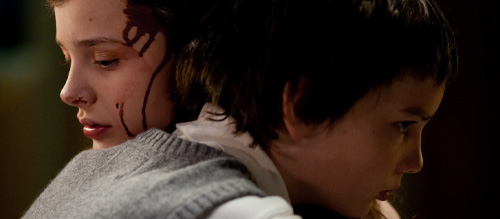Matt Reeves Films Ranked
Over the past decade, Matt Reeves has emerged as one of the most captivating directors in Hollywood. Having spent most of his early career working in television, co-creating the hit series ‘Felicity’ alongside J.J. Abrams, Reeves has since flourished as a reputable filmmaker. Through a string of impressive works, he has earned the trust of audiences and established himself as a reliable purveyor of quality blockbuster cinema.
One key aspect of Reeves’ directorial style is his ability to create visually engaging and immersive worlds on screen – from a civilisation of apes to the comic book-inspired streets of Gotham City. He often employs striking visuals, dynamic camera movements, and meticulous attention to detail in production design and visual effects, to create a rich and captivating cinematic experience. It’s this level of expertise that puts him on a career trajectory that could see him join the likes of Christopher Nolan and Denis Villeneuve as contemporary masters of studio filmmaking.
Reeves’ directorial style also emphasises emotional authenticity and grounded characters. He has a knack for capturing raw and realistic performances from his actors, delving deep into their emotions and motivations to create multi-dimensional people that feel relatable and human, even when said characters are not human. The director often portrays complex relationships and delves into the inner struggles of his characters, resulting in emotionally resonant storytelling.
Matt Reeves is the rare breed of director that can blend high art with blockbuster thrills. Now with an entire corner of the DC Universe under his control, we here at The Film Magazine are using this latest edition of Ranked to reflect on this popular director’s varied and dynamic filmography. Evaluated and judged based on artistic merit, critical appraisal, and their importance to the overall form, these are the Matt Reeves Films Ranked.
Follow @thefilmagazine on Twitter.
6. The Pallbearer (1996)

Tom Thompson (David Schwimmer) is a socially awkward young man akin to The Graduate’s Benjamim Braddock. He is asked to be a pallbearer at the funeral of a high school classmate he doesn’t remember. As he navigates the challenges of dealing with grief, reconnecting with his past, and finding his place in the world, Tom discovers unexpected truths about himself and the people around him.
Matt Reeves’ first feature film is much more confidently made than other debuts. Visually, Reeves teams with cinematographer Robert Elswit, who would later go on to lens most of the films in Paul Thomas Anderson’s oeuvre. The result is an immersive and detailed frame that helps flesh out the world. In addition, Reeves borrows from the handbooks of Mike Nichols and Woody Allen with The Pallbearer‘s dramatic yet comedic tone, 90-minute runtime, whiny main character, and New York setting. Together, these elements elevate Reeves into a competent director, indicating a true passion behind the camera.
The film’s biggest drawback is its script (co-written by Reeves), which struggles to commit to either a philosophical drama or a romcom. The initial premise is interesting but is not explored enough. Instead, the film attempts a balancing act between a philosophical undertaking and a romantic subplot between Tom and his long-time crush Julie, played by Gwyneth Paltrow. It becomes too melodramatic and, unfortunately, the script lacks the intelligence to pull it off. The clashing tones become a distraction, and the film reaches an explanation that is so obvious it makes you wonder if the filmmakers had run out of creativity by that point.
At its best, The Pallbearer is a vaguely poignant and humorous exploration of love, loss, and self-discovery, but these moments are too few and far between to take the film any higher up the list.
5. Let Me In (2010)

Original vs Remake: Let the Right One In vs Let Me In
A 12-year-old boy named Owen befriends a strange girl named Abby, who has recently moved in next door. As their relationship deepens, Owen discovers that she is a vampire, and she must feed on human blood to survive. As the friendship becomes more complicated and dangerous, Owen must decide whether to help Abby or to protect himself from the horrors that come with being so close to a vampire.
Let Me In is a tricky one, and its placement this low down should not persuade anyone that it is a bad film.
On one hand, it’s a technical marvel. The atmospheric cinematography by the legendary Greig Fraser (Dune, The Batman), adds to the film’s overall eerie and unsettling tone. Reeves clearly demonstrates he is an expert at building tension – a particularly memorable gas station scene is the best evidence of this – and it would be foolish not to point out the stellar lead performances by the young Kodi Smit-McPhee and Chloë Grace Moretz. They have great chemistry and convey the emotional complexity called for by their characters.
On the other hand, Let Me In is a remake of the Swedish film Let the Right One In, and Reeves is very faithful and respectful (with some shots and dialogue almost exactly the same). This is often to the film’s detriment. Occasionally, this version feels soulless. Much like a technical assessment in film school, the filmmakers are checking off boxes. It’s as if Reeves looked at the original and thought ‘well they did this here, so now we should.’ It lacks the flare that Reeves has successfully brought to his most recent films.
The most interesting aspect of Let Me In is watching it in a post The Batman world. Much of this feels like the blueprint for Reeves’ take on the caped crusader, including: Fraser’s murky cinematography that dirties the lens, Giacchino’s haunting score, the gothic tone, and Richard Jenkins’ attire that looks like a prototype Riddler costume. Outside of that, there isn’t much of a reason to choose this over the original from two years prior.
Recommended for you: Richard Jenkins: 3 Career-Defining Performances

